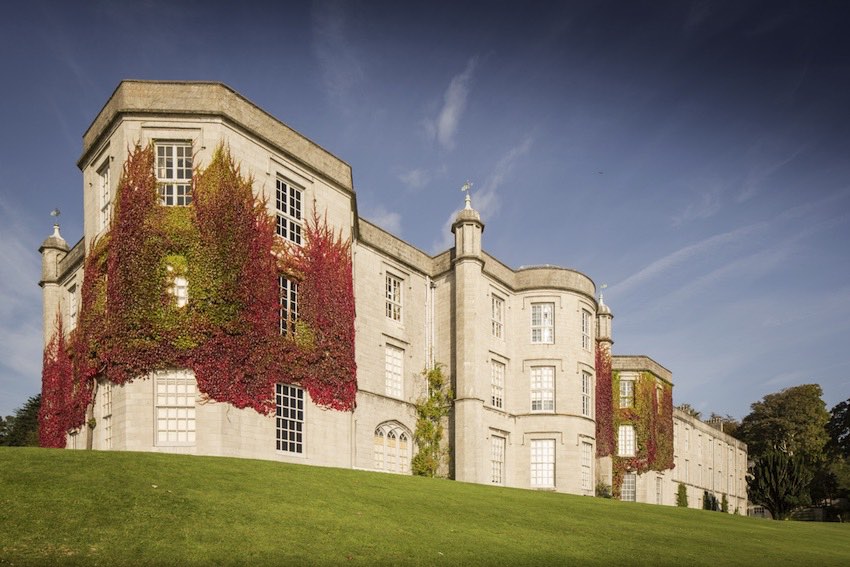
Four years ago, the Kimpton team installed the UK’s first Marine Source Heat Pump at Plas Newydd House in Anglesey for the National Trust. As it was a first, we have been back for a revisit to see how it has done and how it’s performing to try and get a better understanding of the viability of the technology and the whole concept of the Marine Source Heat Pump in the real world.
Being the first to market with any new technology is always going to be a learning curve and mistakes are always made, but designing and installing the first commercial Marine Source Heat Pump would be a step too far for many, but it’s just the sort of challenge that the Kimpton team love.
So four years after the initial installation, we’re back to speak to the National Trust to find out how the system is working for them and whether it’s delivering the promised savings and environmental benefits.
But first some background.
Plas Newydd is a country house on the north bank of the Menai Strait, in Llanddaniel Fab, near Llanfairpwllgwyngyll, Anglesey, Wales. The roots of the current building stretch back as far as 1470, and over the years it has grown, spread and been developed to become undoubtedly the finest home in Anglesey.

But properties of this size also come with their own huge issues. Not least, energy consumption. With a 43-year-old oil fired boiler and the heaviest oil usage of any property within the National Trust estate, it was an issue that had to be addressed.
The other challenge they faced was that unlike a domestic heating system, the fuel was being used as much to protect the contents and chattels of the building from cold, condensation and humidity as to keeping the people who visit it warm and cosy.
And the location presents both problems and opportunities. Being so close to the Menai Strait means that the air around is both cold and damp and with the salt water in the air, highly corrosive. However, the proximity to relatively warm and fast flowing water, gave us the opportunity to tap in and harness some of the latent heat to create the UK’s first Marine Source Heat Pump.
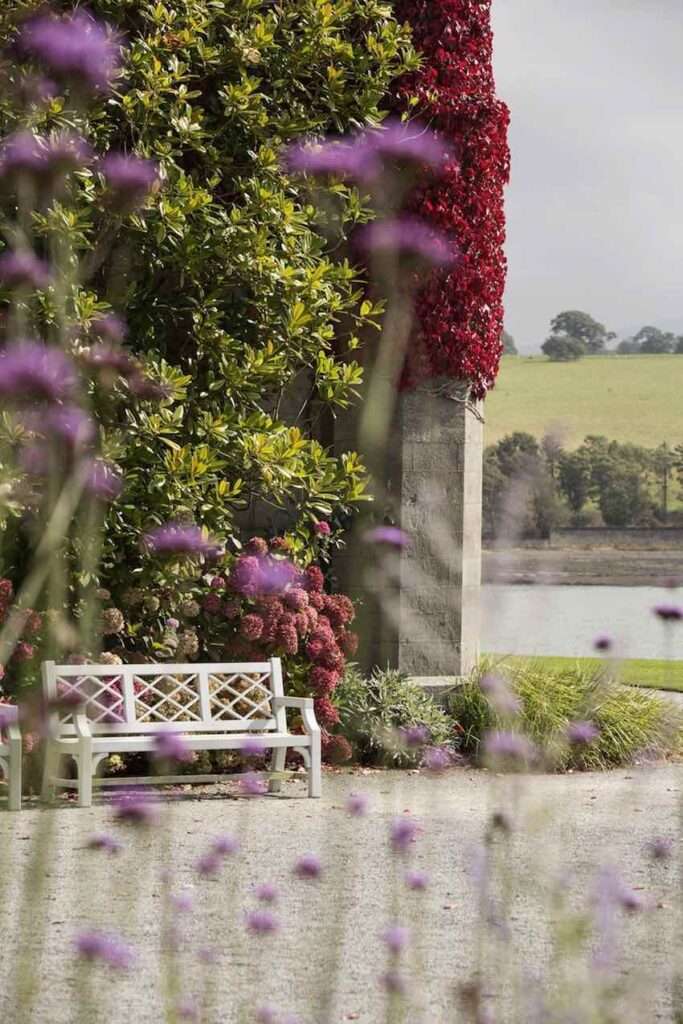
The secret to any successful renewable energy project is to get your energy usage under control first and this was exactly the approach that the National Trust team took. Over a period of almost five years, they methodically worked through the building and the grounds making changes to lower energy lighting, better insulation and even reducing water temperature in the hand wash areas and kitchens.
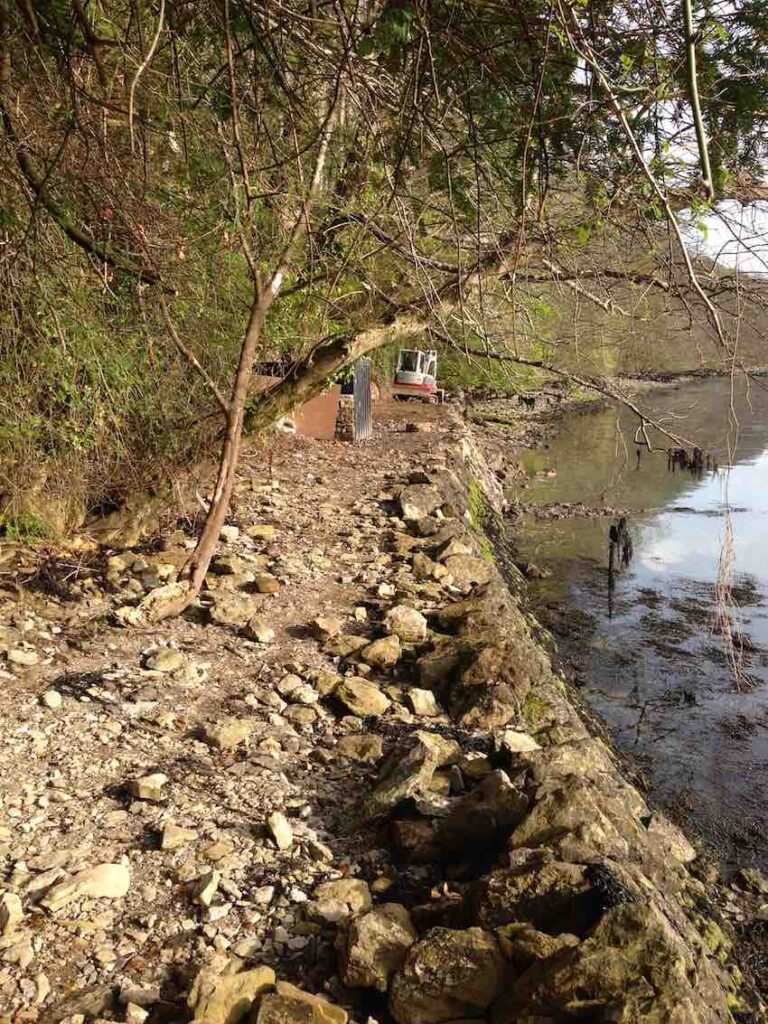 All of this preparation has the direct benefit of ensuring that the energy requirement itself is greatly reduced so that the renewable energy system chosen to provide the energy can be that much smaller and more efficient. In this case it meant that a 300kw system would be plenty big enough. Without these earlier savings, the requirement would have been nearer to 500kw.
All of this preparation has the direct benefit of ensuring that the energy requirement itself is greatly reduced so that the renewable energy system chosen to provide the energy can be that much smaller and more efficient. In this case it meant that a 300kw system would be plenty big enough. Without these earlier savings, the requirement would have been nearer to 500kw.
Still the biggest issue being faced was that this was very much a first. Whilst heat pumps were quite common, this was to be the first design and installation of a Marine Source Heat Pump in the UK.
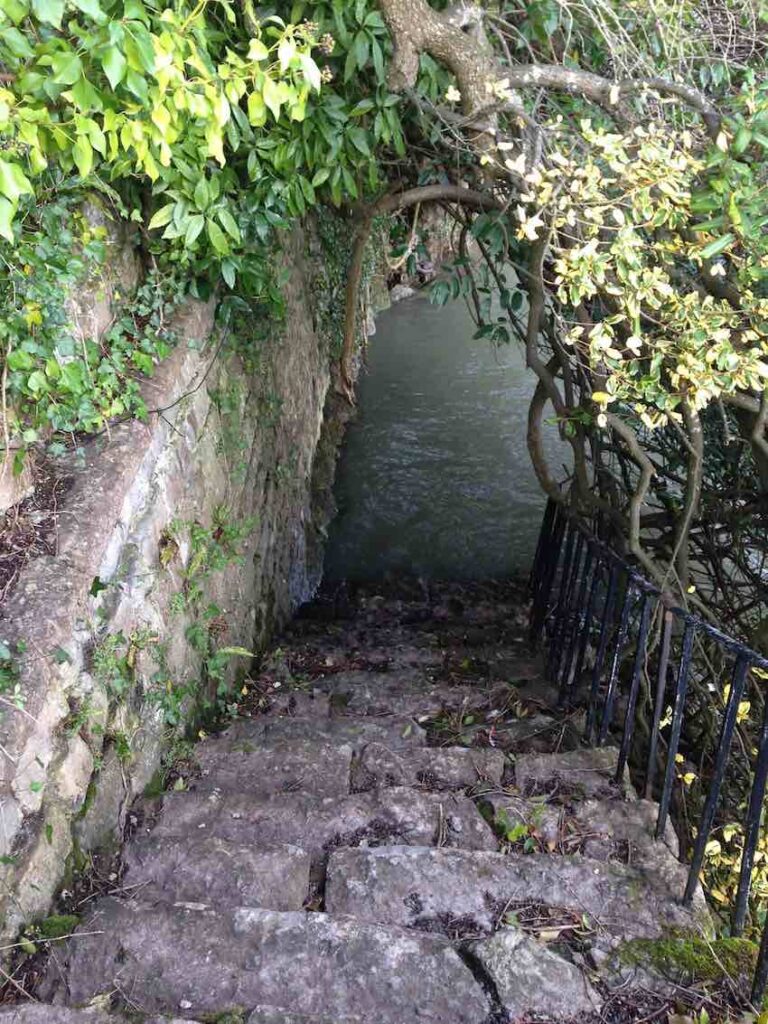
And this is where the Kimpton team came in. Working closely with the National Trust team and our partners from Stiebel Eltron, we designed the system to deliver that 300kw requirement.
One of the key measures of any system of this type is the ratio of energy ‘in’ and heat ‘out’. This is called the Co-efficiency of Performance or CoP. Any renewable energy system has to give you a CoP of 2.9 to qualify for the Renewable Heat Incentive (in laymans terms, you have to put in 1kwh of electricity to give you a return of 2.9kwh of heat out).
The target set for this project was 3.4 CoP. Again, quite a challenge for a technology that hadn’t been deployed before in the UK.
As the ‘Marine Source Heat Pump’ name implies, the system had to draw water (and therefore heat) from the sea and convert it into usable energy.
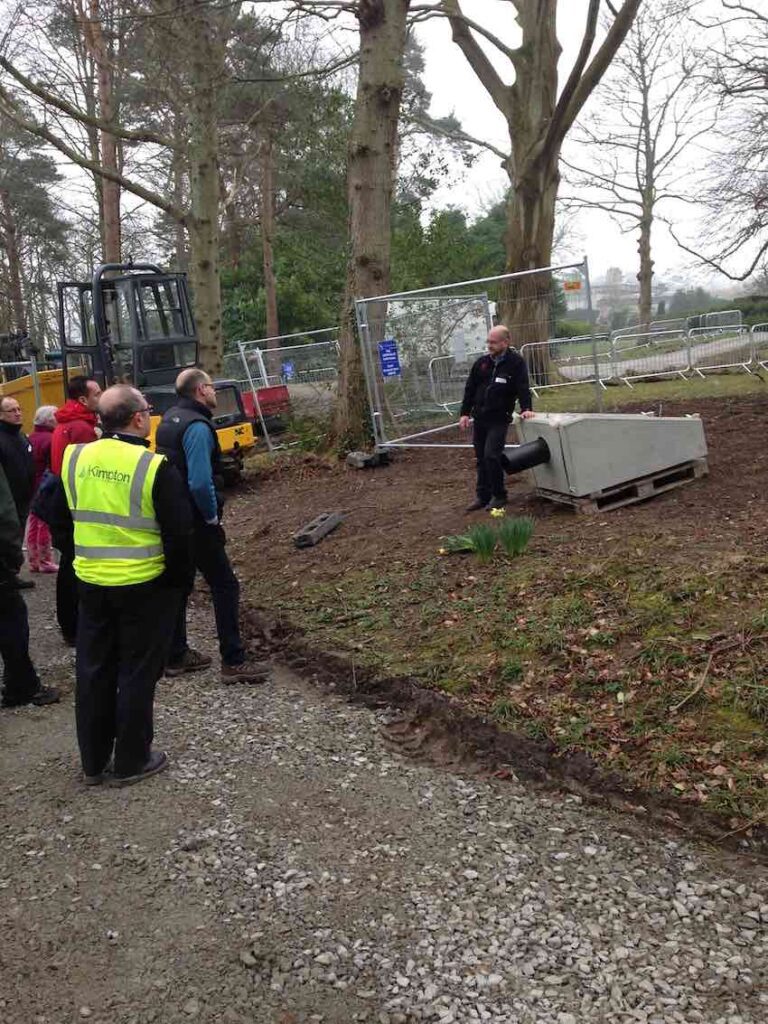
The design for the system had to leave it almost invisible – certainly from the house – and very low key, even from the foreshore. The pipes that run down into the Menai Strait to pull the water in and pump it back out again were designed to reach right down to a level where the feed would still be submerged – even on a 100-year low tide event.
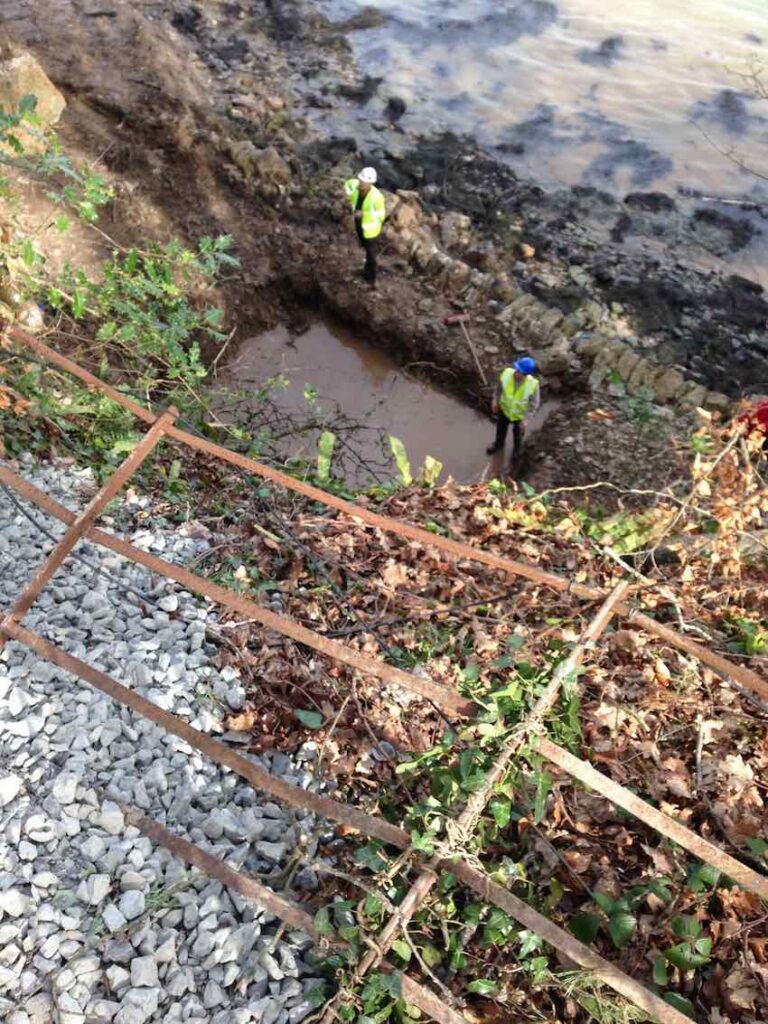
This was surprisingly smooth and despite laying a track to get the lifting gear required to deliver the hosing and components into place, recovery was quite quick. The acid test for us in such a beautiful area and so close to a Grade 1 listed building, was ‘covering our tracks’. Within a few weeks of leaving site, there was almost no sign we’d even been there and even the pump house was out of view and almost camouflaged, down on the foreshore.
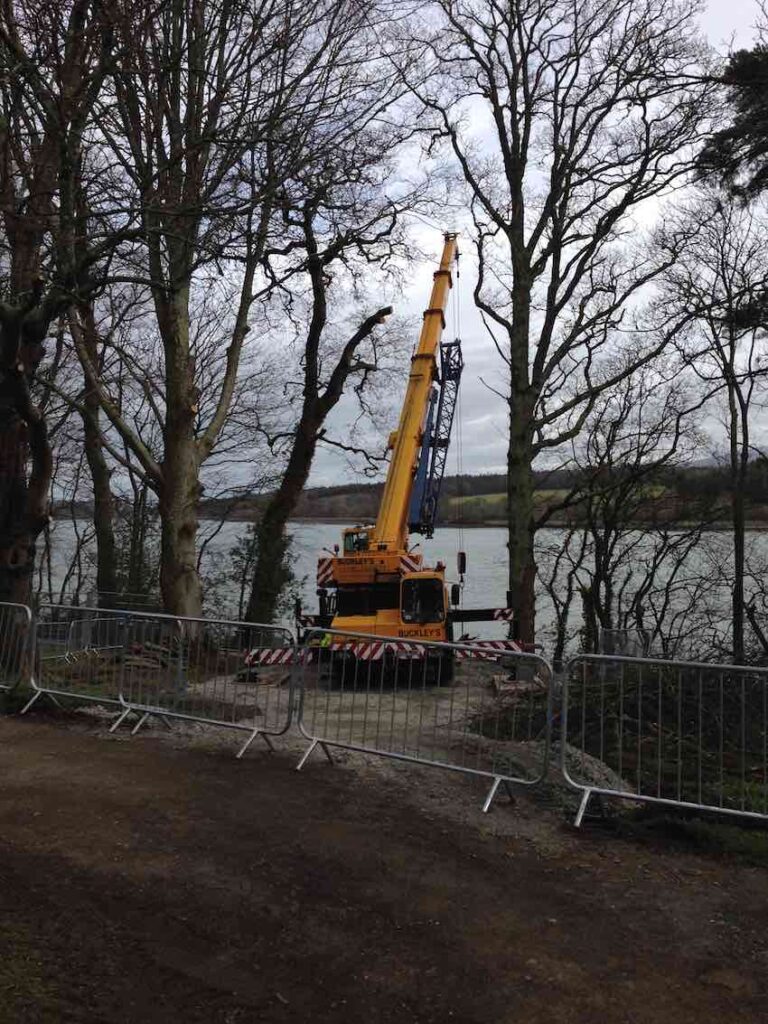
It’s definitely the case that whilst people are happy to introduce renewable and alternative technologies, as with any mechanical services project they have to think twice if there is likely to be a secondary and negative visual impact. So, for example, whilst wind power may have been just as viable here, it wouldn’t have been popular and came with the secondary issue of being inconsistent in its power delivery. Going back to that original point of difference between this and a domestic installation it’s as much about protecting the fabric of the building itself as it is to making it more comfortable for visitors.
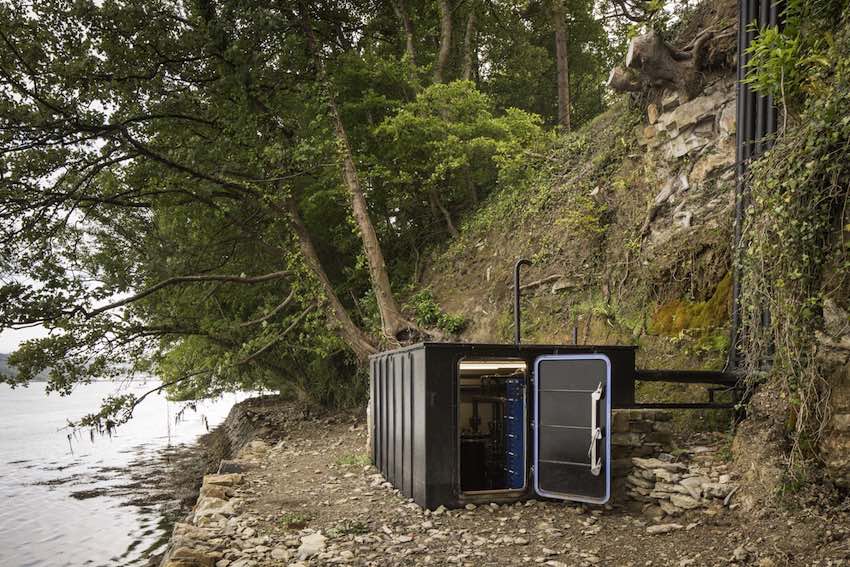
Throughout the installation, the team were under the spotlights with massive press coverage from BBC News and Today Programme, BBC Wales Today, S4C News, BBC Radio Cymru, BBC Radio Wales, BBC Radio Scotland, BBC 5 Live, BBC West Midlands and also the ongoing filming for a series on the National Trust in Wales for BBC4 – as well as all of the national and local newspapers too.
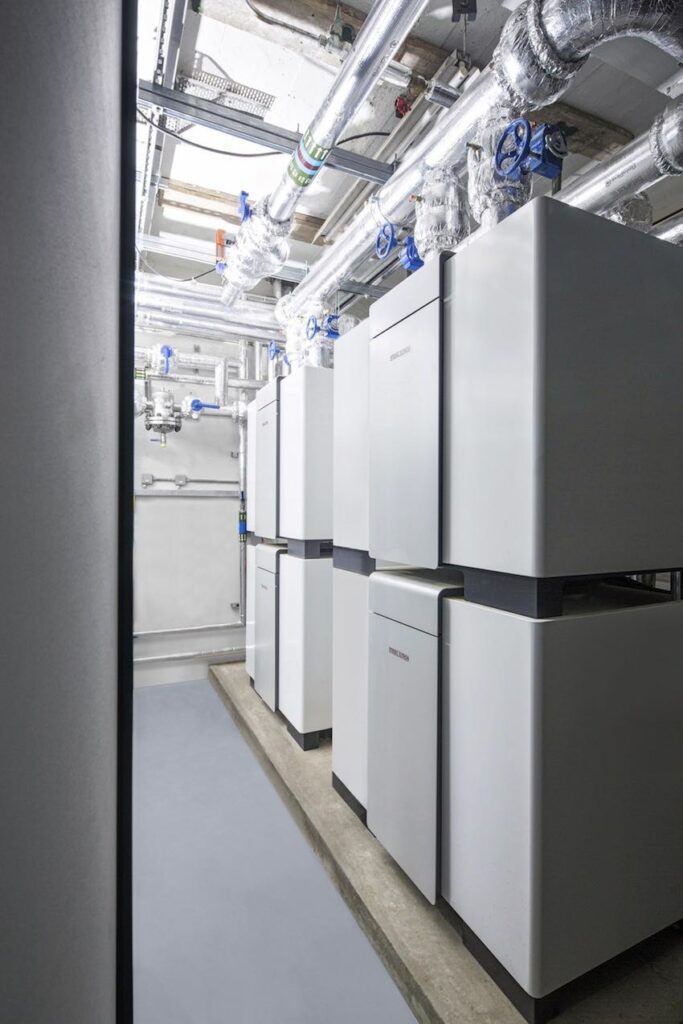
In short, yes. But being honest, there were some teething issues.
I did a follow-up interview with Paul Southall of the National Trust who we worked with on the project and he gave us some candid feedback.
“After the installation in May 2014, the first 18 months or so were pretty much perfect. It ran hitch free for all of this time.
However, the first issues arose on the foreshore side of the system where some of the supplied components were not as marine tolerant as their specification said they should have been and there was some unexpected corrosion.
But the big issue was in not locking down and password protecting the BMS (Building Management System) as this left it open for ‘fettling’. When a system is set up like this, it should only be accessed and adjusted by fully trained staff. It’s not like a domestic system and changing one setting WILL have an adverse effect elsewhere.
So next time we would definitely prevent any unauthorised access to the system and make sure we knew how to get it back to the original settings. Eventually, we got around it by almost having to go back to square one and commission the system again to set it up from scratch again. A little frustrating, but it is a pilot project and we have all learned from the way it has gone. “
How is it doing now?
“So it’s now been running perfectly again for around nine months and we have some definite figures to allow us to run the maths.
It’s running at around 3.0 – 3.2 CoP which is pretty much bang on what it was designed to do.
In the recent cold spell we did have to use some gas, but that was always the plan as the system was designed to cover 96% of the year, which it is doing.
But, perhaps even more importantly, it is hitting all of the relative humidity targets, which is a critical and we are staying well within our target of 40% to 65% Relative Humidity”
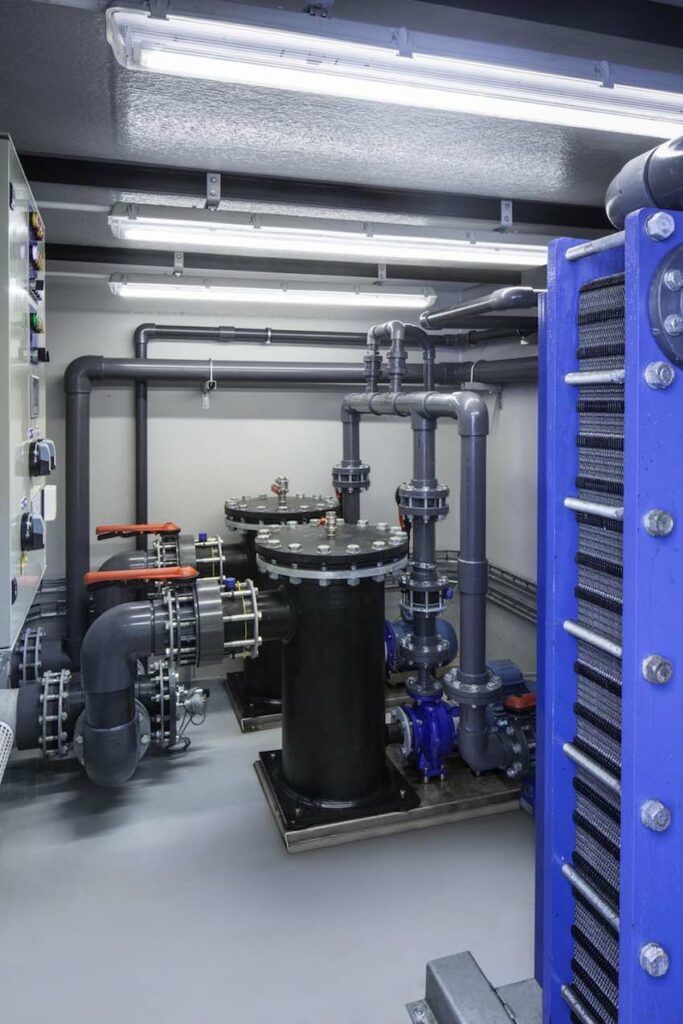
“It did win some awards and one of the bigger ones was the ‘Commercial project of the Year’ at the Energy Efficiency and Renewables Awards 2014, but it also gave the National Trust a new found confidence to invest heavily in renewables.”
Again, according to Paul Southall of the National Trust
“it was one of the catalyst projects that allowed the Trust to see the impact renewables could have both financially and with our environmental impact. It started us on a course over the following years of investing over £30 million in renewable energy projects.”
The simple answer is again yes.
For the property itself – We now have a sustainable conservation heating system which allows greater control and protection of our buildings and contents. It’s a whole new chapter in the story of this special property and its maritime history.
When it comes to the bottom line, In the months when we were resolving the teething issues it was far less efficient and we burnt LPG. But, now it has settled down it’s delivering a saving of around £30,000 per year over the cost of oil, which is now being allocated directly to conservation instead of simply paying the heating bill.
That’s good enough for me.”
I spoke to Richard Kimpton, Group Managing Director and asked him how he felt about delivering such an innovative project.
“We’ve always been happy to take on a challenge and we do have a huge amount of experience with Heating and Ventilation Systems of every kind, so whilst there were elements of the Plas Newydd Marine Source Heat Pump system that were unique and UK firsts, much of the technology that drives it is what we deliver on a daily basis.
Our whole team lives and breathes this sort of work. Plas Newydd was a different type of installation and very much in a challenging location, but it’s a fantastic piece of work to have in our portfolio and we’re incredibly proud of it.”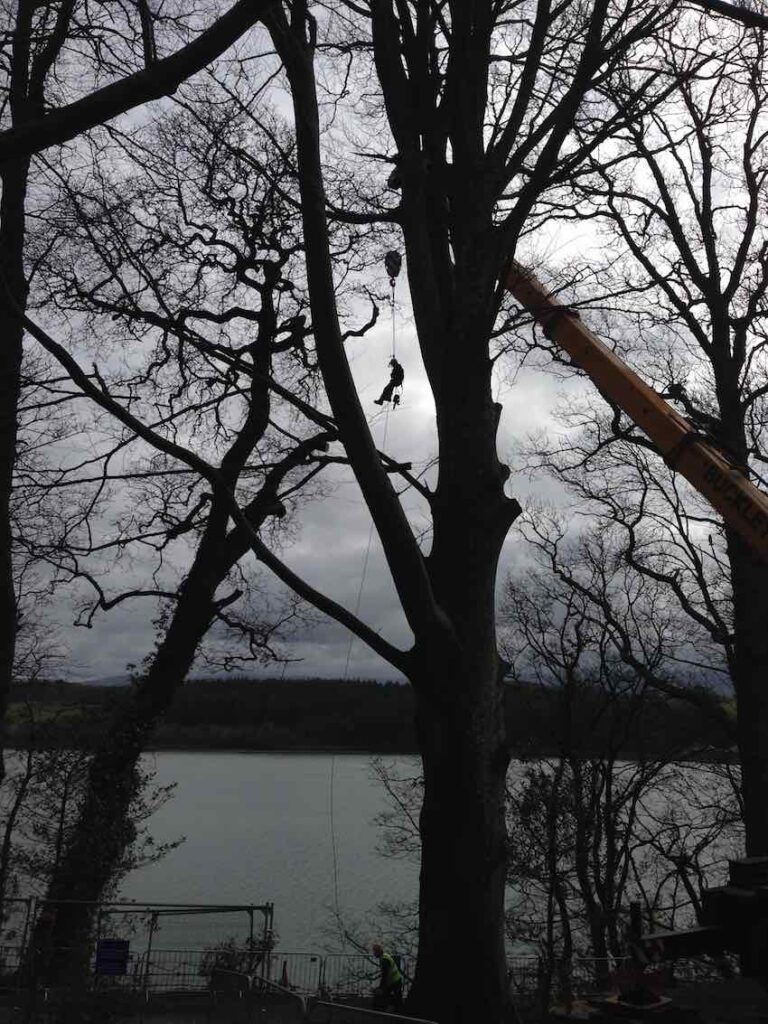
If you would like to discuss any of our services, please call 0151 343 1963 or complete the form below and we will be in touch shortly.